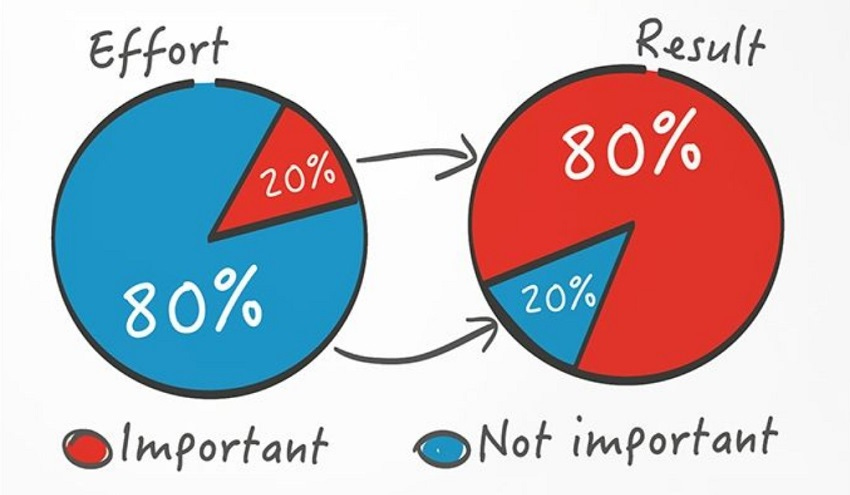The 80/20 Principle: Getting Big Results from Little Effort 📏
Wondering why 20% of your study time generates 80% of your grades? There's a powerful concept that explains why effort and outputs are not evenly distributed - the Pareto principle or 80/20 rule. 📚

What is the 80/20 Rule?
The Pareto principle states that in many systems, 20% of causes lead to 80% of results. A vital few inputs generate most outputs. 📊
For example, 20% of customers drive 80% of revenue. Or 20% of crimes cause 80% of property loss. Often, most effects come from a minority of drivers. ♻️👀
80/20 in School and Beyond 🎓
As a student, a little Pareto thinking illuminates patterns like:
20% of studying leads to 80% of test scores 📝
20% of networking nurturing leads to 80% of job offers 💼
The 80/20 rule applies in many domains - it pays to identify and focus on the vital few inputs with outsized impact. ⚖️🔍
Share with your friends if you liked ❤️ this post!
Pros of the 80/20 Principle👍
Wielding 80/20 gives many upsides:
Increased productivity and success 📈
Better prioritization - do more with less 🚀
Work smarter by identifying leverage points ☝️
Cons of 80/20 👎
However, overapplying 80/20 has downsides too:
Exploiting people or resources 🚯
Excess specialization at the expense of resilience 💢
The best plans still require follow-through 🏁
The Pareto principle illuminates opportunity - recognize the few drivers of the many! But strike the right balance in leveraging 80/20.🔦🛠️
If you have any feedback, suggestions, or want to discuss any topic further, please let me know in the comments or email me at gopichandbusam@substack.com



